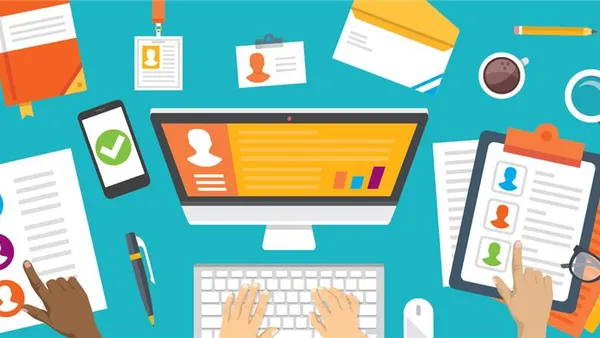“I can’t wait until we can all meet face to face again. Everything is so much better in person!”
Does that line sound familiar? Perhaps you’ve heard it from a friend, a colleague, a partner or a vendor. Maybe you’ve said it yourself. As our society emerges from the pandemic—quickly in some places, more carefully in others—it’s become a fairly common theme.
Research has shown that real benefits to meeting in person do exist. Stronger interpersonal connections can empower quicker decisions, clearer lines of communication and less roadblocks to actions that matter. But is everything really better in person?
Well, maybe.
Until it isn’t.
Yes, for many professionals, the sentiment that “in-person is always better” is obvious, undisputable and absolutely true. If you dig deeper, though, you’ll find another clear trend of the past few years is that some people handled the pandemic lockdown extremely well, because we were already better suited to managing our own time and tuning out the noise of the wider workplace. Some of us are even better suited to working remotely, on our own schedules and interacting best with others when we choose to do so.
With the current raised awareness of mental health in society in general and in the workplace specifically, where, how, and when you work is absolutely a topic worth considering. Decision-makers at companies considering the implications of “return to office” policies need to consider all factors before moving forward with outright returns onsite, hybrid plans or remote-first options. It’s not unreasonable to hope that more flexible approaches to what constitutes a workplace, allowing for diverse populations to contribute in the ways they perform best, will allow for a rising tide of success across the spectrum.
Working from home was nothing new
When the rest of the world went into work-from-home and online-meeting world, those of us already used to it relaxed (as much as we could given a public health crisis), went about our business and really pioneered a model of how more traditional, office-based colleagues could be successful while confined to their homes and Microsoft Teams meetings. Having been working in largely remote roles for the past twelve years or so, I’m happy to admit I was part of this wave of helpers.
We posted how-to blogs and video tutorials, shared our tips and tricks for organizing schedules and helped friends and co-workers learn the value of both a dedicated “home office” space and taking a conference call while getting in a little light cardio. Some people I know might have even parlayed the lockdown into the best results of their careers—and it wasn’t just at work.
My own teenage son lives with a neurodiversity that includes social anxiety among its different effects on his personality. He performs far better in one-on-ones and small group settings than he has in large classrooms. The lockdown order came down for him in the middle of his sophomore year in high school. He logged into class every day, got his homework done and never had to deal with the boisterous distractions so many teenagers provide in their classrooms as a matter of course. That semester, I watched my son’s grades jump from good to great. There was no denying the new environment of virtual education was actually a boon to his learning style—and as he returned to school, I had to wonder how his grades would respond.
Unsurprisingly, my son’s GPA did drop by a few tenths of a point when he had to return to in-person learning. A crowded classroom simply wasn’t the best setting for him to do his best work.
In-person isn’t always instrumental
With my own focus on employee experience—not to mention my own comfort level with working from home—I had to wonder about the professionals out there who thought, felt and worked like my son did. I had to wonder about people who thought differently, worked differently; about people with visible and especially, invisible conditions that made a traditional office environment a barrier to doing their best work. Would their own ability to succeed suffer if they returned to a job that demanded a physical presence, day-in and day-out?
It's a question very few people seem to be asking, perhaps because we’re afraid of what we’ll learn—but it seems almost certain that it will.
Certainly, many people quietly wrestle with conditions they never tell the wider world about. Those with neurodiversities like autism, ADHD and other examples of their brains simply working differently see, feel and hear the world in a way than more “normative” individuals are only beginning to comprehend. Given that, I suppose it shouldn’t surprise me that with everything we hear about mental health, it’s sometimes the same organizations that claim empathy for their employees in these trying times that are insisting those same employees come back to an office that very well might be damaging to their mental health.
You don’t need to be diagnosed with a documented neurodiversity to be an introvert, either. The classic Myers-Briggs INTJ is just as like to feel more comfortable in settings where social interaction isn’t a requirement. No matter which methodology you use to come up with a classification, there are always going to be certain personality types who get more work done, faster and better, when they’re left to it—and even moreso, as the pandemic proved, when they can do that work in a place of their own choosing.
Similarly, the work itself drives solitary effort in many cases. Certain tasks and even entire jobs are clearly performed most effectively when we can turn off the world and focus. Assembling a presentation. Creating a stunning visual. Developing difficult code. Writing anything of importance. People’s ability to do these things in their own way, in their own spaces, isn’t restricted to the traditional creators of the art world. In a business setting where the importance of experience is taking on a primary role, people who understand, design and create those experiences are in high demand. Shouldn’t they be able to have some say in how, when and where they create—and collaborate?
Going forward — Alone, together and everywhere in between
The good news is that we’re seeing a recognition that different people work different ways. We’ve only begun to sort through the findings of the COVID lockdown and its impact on how people work, but a few things are clear. Yes, “Zoom fatigue” is real, and the desire for human contact in many of us is a given. Similarly, there are entire classes of work and workers that were able to use a remote, virtual status as an accelerator for their success and their careers. Many, if not most of us, fall somewhere in between, with days we need to work together and days we need to turn the focus light on.
Different companies and even industries are taking different routes to addressing this threefold reality. Naturally, you have some who insists on a full-time, 100% return to the office. Other workplaces—often smaller ones, or satellite offices—have gone entirely virtual. (The real estate savings alone are a major reason for making this possible.) The typical middle road of a mandated hybrid model, with certain days “in” and certain days “out”, is where many other companies are landing… but does any of this work?
We hear a lot from the people who love to be around other people. They’re extroverts. They love to talk. Of course we hear from them—but I just keep thinking about the people who keep to themselves. The people who have their reasons, but are the least likely to share them. Talented people, people capable of so much greater success if left to their own devices to set their parameters. People like my son. Ultimately, a differentiated approach that takes the individual’s skills, talents, working style and personality—especially including mental health and any neurodiverse tendencies—into account is the only way to get the absolute best out of your people.
Many things are better in person, but some things—and some people—just aren’t, and that’s okay. They’re still capable of incredible things.
No matter what they are or aren’t dealing with—and whether we can see it or not—our people know when and how they do their best work. Perhaps it’s time we start trusting them to do it their way.










